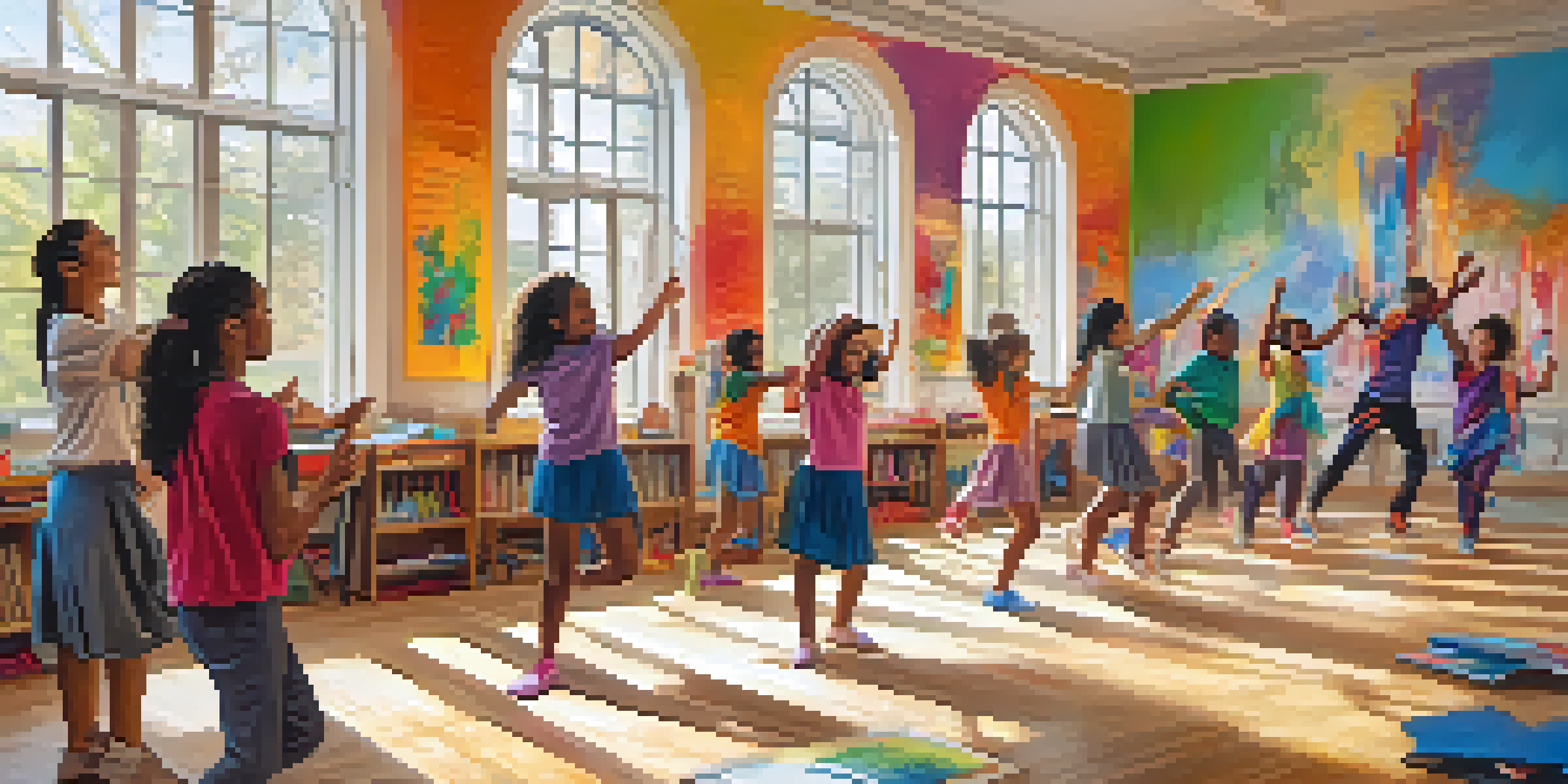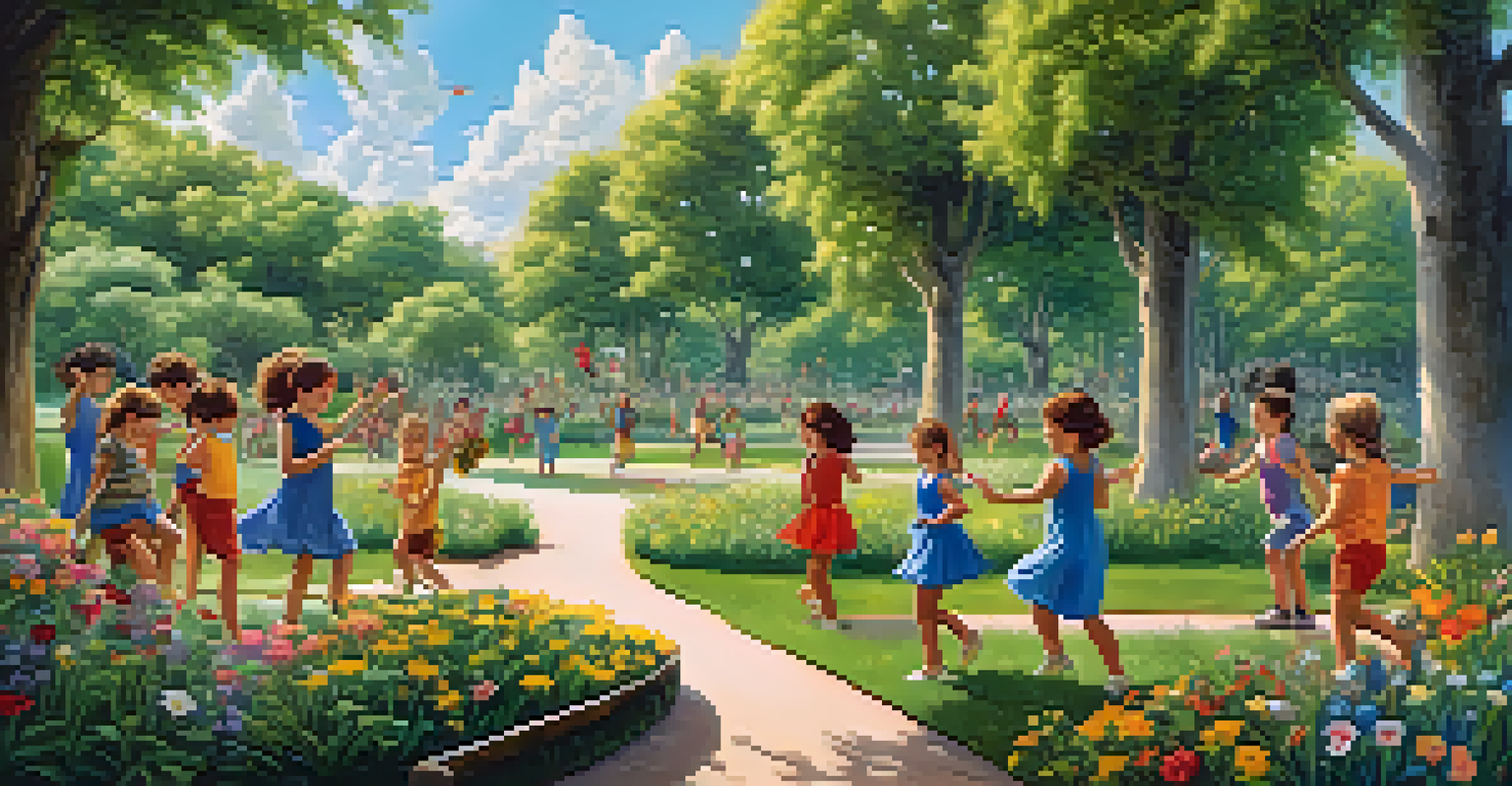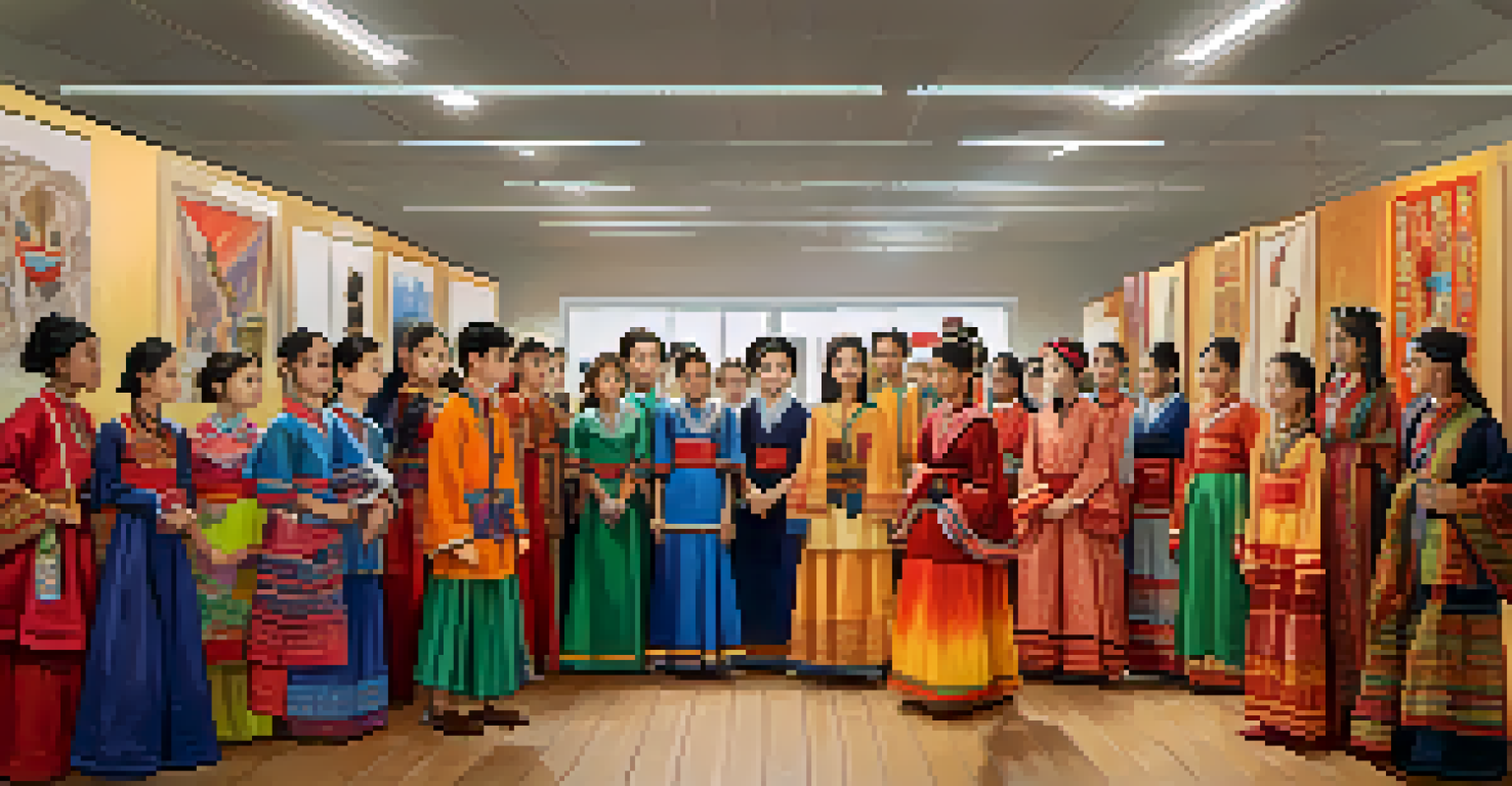Integrating Dance and Visual Arts in Education Programs

The Importance of Arts Integration in Education
Integrating the arts into education is crucial for fostering creativity and critical thinking. By blending dance and visual arts, students engage in a multi-faceted learning experience that enhances their cognitive abilities. This approach not only makes learning more enjoyable but also encourages collaboration and communication among students.
Art is not a thing; it is a way.
Research shows that when students participate in arts-integrated programs, they tend to perform better academically. The combination of movement and visual expression caters to different learning styles, making education more inclusive. For instance, a student who struggles in a traditional classroom might thrive in an environment that allows them to express their understanding through dance or drawing.
Moreover, arts integration can help develop emotional intelligence. Students learn to express their feelings and ideas through creative outlets, which builds confidence and self-awareness. In an increasingly complex world, these skills are invaluable for personal and professional success.
Benefits of Combining Dance and Visual Arts
Dance and visual arts complement each other beautifully, enriching the learning experience. When students engage in dance, they explore rhythm, movement, and expression, which can enhance their understanding of visual elements like form and color. This kinesthetic engagement helps to solidify concepts that might be abstract in a traditional setting.

For example, a lesson on shapes could be transformed by having students create visual art pieces that they then embody through dance. This not only reinforces their understanding of geometric concepts but also allows them to express their creativity in multiple ways. Such activities can foster a deeper appreciation for both art forms.
Arts Boost Creativity and Learning
Integrating arts into education enhances creativity and critical thinking, making learning more enjoyable and inclusive.
Additionally, combining these disciplines encourages students to think outside the box. They learn to see connections between different artistic expressions, which can lead to innovative ideas and projects. This holistic approach cultivates a mindset that values creativity and interdisciplinary thinking.
Implementing Arts Integration in the Classroom
To effectively integrate dance and visual arts in education, teachers should begin by identifying themes or topics that lend themselves well to both disciplines. For instance, a unit on nature could involve students creating visual art inspired by their observations and then performing a dance that embodies the elements of nature. This thematic approach provides a cohesive learning experience.
The arts are an essential part of education, just like reading, writing, and arithmetic. Music, dance, and theater are fundamental to a complete education.
Collaboration among educators is also key. Teachers from different disciplines can work together to design lessons that incorporate both dance and visual arts. This not only enriches the curriculum but also allows students to benefit from diverse teaching styles and perspectives.
Furthermore, providing students with opportunities for self-directed projects can enhance their engagement. Allowing them to choose how they want to express their understanding through dance or visual art encourages ownership of their learning and fosters a passion for the arts.
Promoting Cultural Awareness Through Arts
Integrating dance and visual arts also opens doors for cultural exploration and appreciation. Students can study various art forms from around the world, learning about their historical and cultural contexts. This can lead to meaningful discussions about diversity and inclusion.
For instance, a project focused on African dance could be paired with visual art that reflects African traditions and symbols. This not only broadens students' horizons but also helps them understand the significance of cultural expressions. Such initiatives can promote respect and empathy among students.
Cultural Awareness Through Arts
Arts integration allows students to explore diverse cultures, promoting respect and empathy in an interconnected world.
By experiencing and creating art from different cultures, students develop a more global perspective. This cultural awareness is essential in today’s interconnected world, where understanding and appreciating diversity can lead to more harmonious communities.
Supporting Social-Emotional Learning with the Arts
The incorporation of dance and visual arts into education can significantly support social-emotional learning (SEL). Through these creative outlets, students learn to express their emotions, which is a key component of SEL. This expression can lead to improved emotional regulation and resilience.
For example, a student who feels overwhelmed might find solace in creating a visual art piece or expressing themselves through dance. These activities provide a safe space for exploration and self-discovery. When students feel more in control of their emotions, they are better equipped to handle challenges both in and out of the classroom.
Additionally, participating in group arts projects fosters teamwork and collaboration. Students learn to communicate effectively, resolve conflicts, and build relationships—all essential skills for personal and professional success. Integrating the arts into education thus lays a strong foundation for holistic development.
Enhancing Critical Thinking and Problem Solving
Integrating dance and visual arts encourages critical thinking and problem-solving skills. When students are tasked with creating a dance piece or a visual artwork, they must make decisions about movement, composition, and expression. These choices require them to analyze and evaluate their options, fostering a deeper understanding of the creative process.
For example, while working on a group project, students may need to navigate conflicting ideas about choreography or design. This collaborative effort cultivates negotiation skills and promotes the ability to view challenges from multiple perspectives. Such experiences are invaluable in developing effective problem-solving strategies.
Arts Support Emotional Learning
Incorporating dance and visual arts helps students express emotions, enhancing social-emotional learning and personal growth.
Moreover, the iterative nature of the arts allows for experimentation and learning from failure. Students are encouraged to take risks and understand that not every attempt will succeed. This mindset is crucial as it prepares them to tackle real-world challenges with confidence and creativity.
Measuring the Impact of Arts Integration
To understand the effectiveness of integrating dance and visual arts in education, it's essential to establish clear metrics for assessment. Educators can use a combination of qualitative and quantitative methods to evaluate student progress and engagement. Surveys, observation, and student portfolios can provide valuable insights into the impact of these programs.
For instance, tracking improvements in students' academic performance, social skills, and emotional well-being can help illustrate the benefits of arts integration. Additionally, feedback from students about their experiences can guide future program development and refinement.

Ultimately, measuring the impact of arts integration not only showcases its value but also helps justify further investment in such programs. As schools increasingly recognize the importance of a well-rounded education, the integration of dance and visual arts will play a pivotal role in shaping the future of learning.